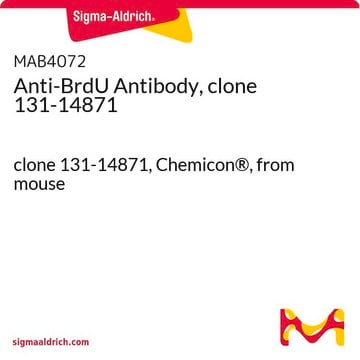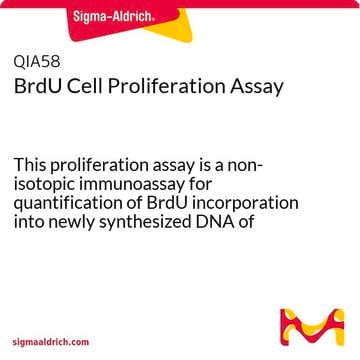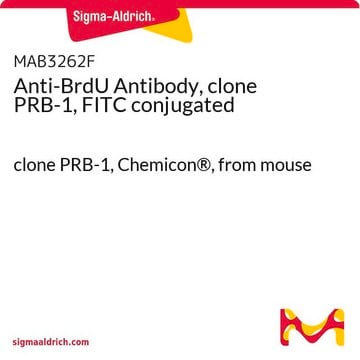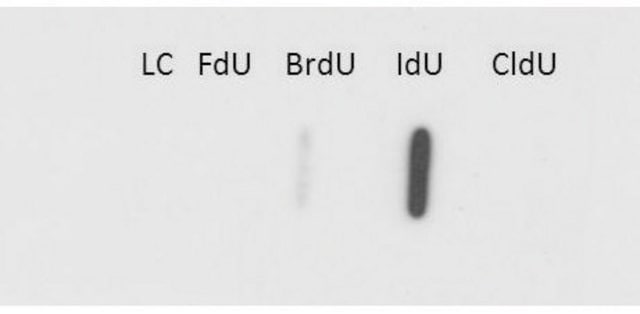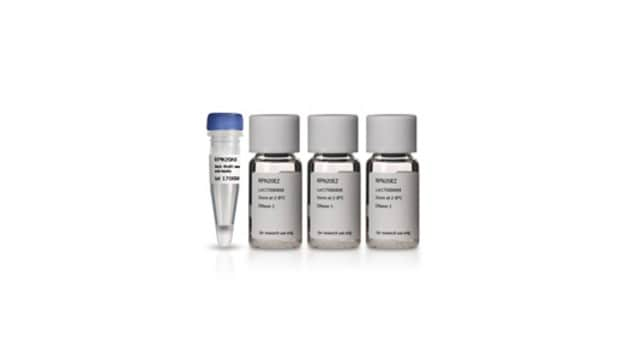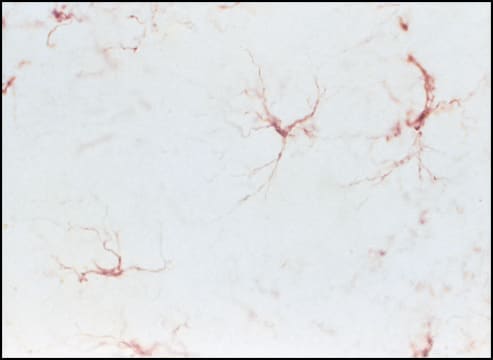B2531
Monoclonal Anti-BrdU antibody produced in mouse
clone BU-33, ascites fluid, Immunohistology Grade
Sinónimos:
Anti Brdu, Anti Brdu Antibody - Monoclonal Anti-BrdU antibody produced in mouse, Brdu Antibody, Anti-Bromodeoxyuridine
About This Item
Productos recomendados
origen biológico
mouse
Nivel de calidad
conjugado
unconjugated
forma del anticuerpo
ascites fluid
tipo de anticuerpo
primary antibodies
clon
BU-33, monoclonal
reactividad de especies
wide range
técnicas
immunocytochemistry: suitable
immunohistochemistry (formalin-fixed, paraffin-embedded sections): 1:1000 using sections of intestine from mouse or rat treated in vivo with BrdU
isotipo
IgG1
Condiciones de envío
dry ice
temp. de almacenamiento
−20°C
modificación del objetivo postraduccional
unmodified
¿Está buscando productos similares? Visita Guía de comparación de productos
Categorías relacionadas
Descripción general
Especificidad
Inmunógeno
Aplicación
Acciones bioquímicas o fisiológicas
Almacenamiento y estabilidad
Otras notas
B8434 Anti-BrdU antibody, Mouse monoclonal
clone BU-33, purified from hybridoma cell culture
Cláusula de descargo de responsabilidad
Not finding the right product?
Try our Herramienta de selección de productos.
Producto relacionado
Código de clase de almacenamiento
12 - Non Combustible Liquids
Clase de riesgo para el agua (WGK)
WGK 1
Punto de inflamabilidad (°F)
Not applicable
Punto de inflamabilidad (°C)
Not applicable
Certificados de análisis (COA)
Busque Certificados de análisis (COA) introduciendo el número de lote del producto. Los números de lote se encuentran en la etiqueta del producto después de las palabras «Lot» o «Batch»
¿Ya tiene este producto?
Encuentre la documentación para los productos que ha comprado recientemente en la Biblioteca de documentos.
Los clientes también vieron
Nuestro equipo de científicos tiene experiencia en todas las áreas de investigación: Ciencias de la vida, Ciencia de los materiales, Síntesis química, Cromatografía, Analítica y muchas otras.
Póngase en contacto con el Servicio técnico



